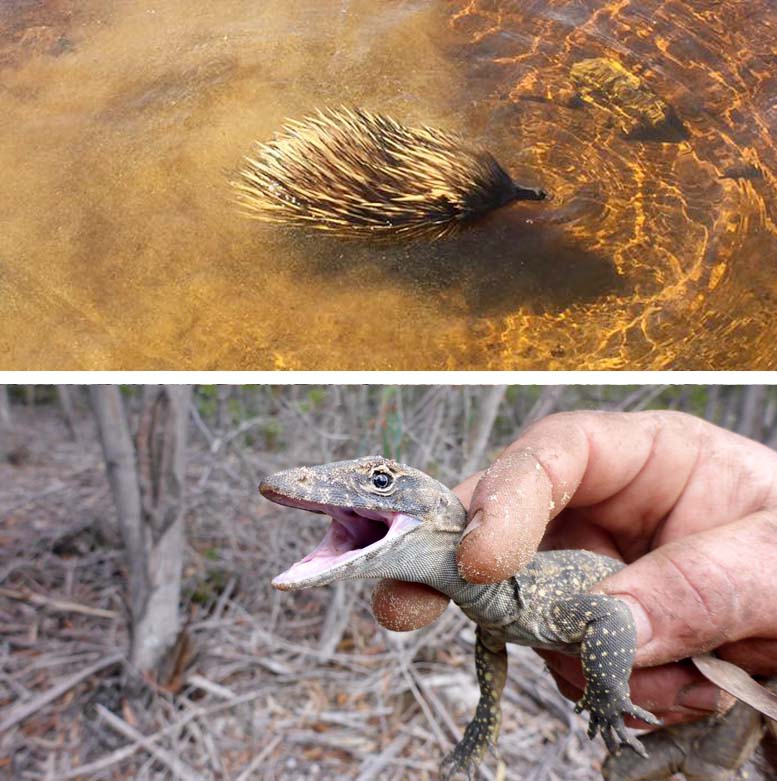Although I have been involved with field research on Kangaroo Island’s short-beaked echidna subspecies (Tachyglossus aculeatus ssp. multiaculeatus) and Rosenberg’s goanna (Varanus rosenbergi) since 1996, my fascination for both species continues to grow. Echidnas survived the environmental conditions that wiped out the dinosaurs and are one of the few Australian fauna species that has an entirely Australia-wide distribution. This shows how versatile the species is at adapting to numerous habitat types and conditions. The Rosenberg’s goanna was once widespread from Sydney across to south-western WA but now Kangaroo Island is considered the stronghold for the species. This species is sometimes called the Heath Monitor but occupies all habitat types on Kangaroo Island.
Although both the echidna and goanna are crucial for aerating soil through foraging and burrow digging activities, they share another lesser known phenomenon – their homes. On Kangaroo Island, Rosenberg’s goannas use termite mounds to incubate their eggs that are deposited around the summer solstice. The gravid Rosenberg’s goanna will commence excavation of an incubation chamber in the afternoon, lay eggs after dusk and backfill the hole before midnight. Termites quickly make more permanent repairs and seal the entrance hole over the following days. Termite mounds provide stable thermal conditions and humidity which are ideal for incubating eggs.
Echidnas are also very attracted to using termite mounds – not as egg incubators, but as ‘nurseries’ for their young ‘puggles’. Puggles grow quickly and hang on to the underside of the mother. When they become too heavy, the mother will excavate a chamber within a termite mound, leave the puggle and backfill the chamber. Lactating mothers are exceptionally busy feeders and forage for up to 18 hours per day to provide milk for the puggle. Approximately every three days, the mother will return to the nursery burrow, excavate the entrance, feed the puggle and backfill the hole again. When the puggle is weaned, the mother feeds the puggle one last time and then leaves the mound without backfilling the hole.
Because the echidna breeding season is late July and early August, gestation is around 23 days and incubation of the egg takes 10.5 days, so most puggles hatch in mid to late September. After just under two months of age, at around mid to late November, puggles become too spiky and heavy and are deposited in nursery burrows. Occasionally, puggles are deposited in the same termite mounds that the Rosenberg’s goanna uses for incubating eggs and both species can be found together at the same time. Eggs deposited by Rosenberg’s goanna hatch in spring and juvenile goannas often live in the mound eating termites and undertake a few exploratory journeys outside of the mound for a few months. At this time, juvenile goannas are vulnerable to being killed by the almost fully developed spines of the puggle or the spines of the mother echidna returning to feed the puggle.
Read our next article on a fascinating conflict between a goanna and an echidna on Kangaroo Island
For more information please contact Dr David Ellis, Ecologist, at dellis@ecosure.com.au

